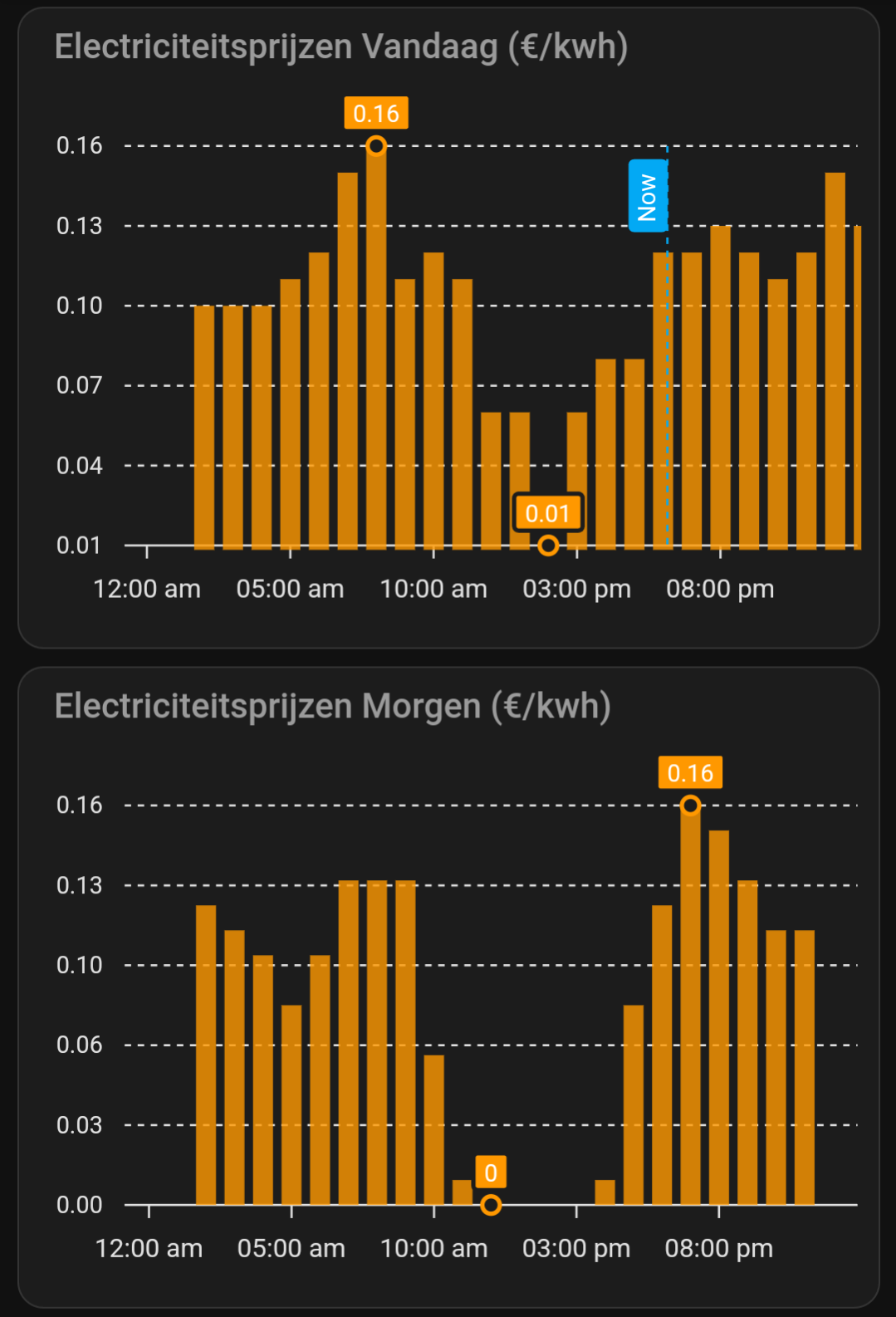My PGE bill is a little over 50c per kilowatt hour. Its starting to become like a second mortgage or car payment for some. Wondering what other people are paying for their power.
https://www.pge.com/assets/pge/docs/account/rate-plans/residential-electric-rate-plan-pricing.pdf
My electric bill last month was $14.62. That’s with a $64.51 solar credit. But then I pay a $50 lease on the solar panels. I don’t understand how my utility charges with tiers so I’ll put the details here for people who know better than me:
Tier 1 first 300 kWh at $0.04088 per kWh
Tier 2 next 260 kWh at $0.04643 per kWh
Regulatory Charges 560 kWh at $0.01374 per kWh
Power Supply Adjustment 560 kWh at $0.04598 per kWh
Power Supply Administrative Adjustment 560 kWh at $0.00724 per kWh
15¢/kWh. Makes driving an EV really economical. I did a day trip last week and had to charge at a DC fast charge and it was 56¢/kWh. At that price it would’ve been cheaper to drive my wife’s Traverse. For reference the break even for me at $3/gal is 40¢/kWh (3.5 mi/kWh). eMPG is a joke. The real measurement is miles/dollar.
EV driving really shines in local trips, which is the majority of most people’s driving. My husband and I have solar panels and a plug in hybrid, so his commute to work every day is essentially free for us (aside from wear and tear). If you’re regularly driving long hauls then fully EV doesn’t seem to make sense yet, but for every day driving, the trade off of having cheaper daily trips with occasional higher expenses for long hauls probably still nets a lower cost per mile.
My usual commute to work is like eight miles. I’ve considered purchasing an old leaf just to use to drive to work and back. The fact that they only get 40-100 mi round trip is negligible to the fact that I would save a decent amount of money on gas.
The trade-off turned out to be that my insurance rates and the other maintenance would more than absorb the cost savings from any gas so unless I also got rid of my primary vehicle which I’m not likely to do it would be a bad move for me.
2 car home makes having one foot in and the other out easy. I was convinced when doing the math and that battery cooling/heating tech made it to the mainstream. It’s why I never considered a hybrid or the leaf.
When I first got my EV, the DC fast charge rates weren’t that high. I was seeing an average around 35 cents/kWh. A near 50% jump in price now has me planning trips in advance not for just charging stops but a cost analysis in case it’s cheaper with gas (fuck Illinois electricity rates). The plan is still to get my wife an EV when it’s time to replace the Traverse. I hope that DC rates won’t be so bad for long trips by then so I don’t have to hear about it. She’s still unconvinced despite our summer vacation being done with entirely level 2 chargers on the way down and at our destination, then 1 DC charge to get back home.
I rent a car for uber. They recently changed it so all rentals must be electric. I don’t have a way to charge at home, which means I pay 60¢/kWh to charge the car. I get about 200 miles of range for about $20.
Those who charge at home, overnight, get subsidized electricity for charging an EV, so they pay 4.2¢/kWh, or about 7% of what I pay to charge the car.
It pisses me off that this decision, to force all rental uber drivers to use EVs, was probably made by someone who lives in a house and has no idea that people who rent cars to drive uber tend to live in shitty little apartments with no at-home charging.
Not only do I pay through the nose for energy, more than I would pay for gas, I lose 1-2 hours of income per day just twiddling my thumbs in random grocery store parking lots.
And that doesn’t count the time lost driving from station to station looking for an available charger.
Renting a car to drive for uber doesn’t sound financially sustainable in the first place
It’s not.
In the summer, $350+ per month. In GBE winter, more like $150 per month.
In Malaysia they break it down into tariff so the more you use, your bill will spike exponentially. The rate are RM0.218/kwh for the first 200kwh, then RM0.334/kwh for 201-300kwh, then RM0.516/kwh for 301-600kwh, then RM0.546/kwh for 601-900kwh, then RM0.571/kwh for 901kwh onward.

Dynamic pricing contract. Planning when to charge the car, running dishwasher etc is small effort.
Adding 5KW solar panels and a change of contract, from >€500 to something like €75. Family of 4, pretty heavy usage.
Is this exclusive or inclusive of the energy tax? IIRC that’s about €0.15/kWh in the Netherlands
Inclusive tax, but exclusive service fee, handling fee, network fee, administrative fee, etc. You get the picture.
We are getting screwed by the energy companies and the infrastructure companies. Everyone wants a piece of the pie.
At least (some of us) are getting money back, when your solar production exceeds your consumption. But that is going to change soon.
At least (some of us) are getting money back, when your solar production exceeds your consumption. But that is going to change soon.
The same thing is happening in the US. Solar panels used to be a lot more expensive to install, but the amount many utilities would pay your for excess generation was also a lot higher.
I am in the greater Boston area and just pulled up my most recent bill. Total cost for me (including generation and delivery) came out to $0.33 per kWh. When it comes to the total cost each month, my cost goes down dramatically in the winter when the gas is used for heat instead of the electric for AC.
Average 0.16 USD per kwh if I divide the whole bill by the KWH.
Our bill is pretty high but literally everything runs on electricity in the house, the cooking, water heating, A/C, we have clothes washer & dryer, there is no gas line.
same here. I sorta like it. I mean a gas meter alone with be 20 even if you use no gas for the month and honestly I like having one less bill to keep track of.
We have two rates, this is if you are using over 10kwh per day, the maximum rate: $0.1372 per kwh
A $400 bill at $0.50 per kwh is 800 kwh. Our electricity usage in the month of August was 787 kwh. I wired an energy meter into my circuit panel a month ago, so I can break that down:
- 210 kwh for EV charging. I don’t drive a ton and can also charge at work sometimes. This is 27% of our total
- 130 kwh for AC. We live in SE MI, so it’s not hot. We keep our AC set to 75 when it’s on. These two combined are now 40% of our bill
- 62 kwh for my work desk (hybrid work) and deep freeze
- 61 kwh for our furnace blower motor. This one surprised me. We were leaving it on the low setting to equalize temperature. On the low speed it pulls 500 watts, or 12 kwh/day. It obviously pulls more power when the AC is on
- 61 kwh for our fridge
- 28 kwh for our washing machine and gas dryer
- now we’re in odds and ends territory. 17 kwh for our instant Hot water (tea), 12 kwh for our sump pump and dehumidifier, 11 for our dishwasher, 8 for the TV (old fluorescent)/garage/ps5/modem/route, 7 for the microwave
- another 100 or so that doesn’t have a clamp on the breaker
If you don’t have an EV and you’re really keeping your AC at 84 I strongly suspect you have a failing appliance. Unless you live in Phoenix and have a massive and very poorly insulated house or something.
During covid (I was doing remote work, so basically no EV charging), our old dishwasher finally stopped working with a dryer heater error code. When we replaced it our electric bill fell by a double digit percentage (I want to say 20%+) year over year.
As for things like insulation, going from 3" of 1969 insulation to a massive quantity of blown in helped our winter heating bill (gas) a lot more than our summer AC bill.
Good luck!
Sorry to ask, why’re you equalizing temperature?
i feel the AC goes on when it’s hot or warm and the blast furnace goes on when it’s cold, is there a particular advantage as to why you’re doing it this way?
It was mostly for our younger kids. We live in a smaller ranch, so we close their doors after they’re asleep so we don’t have to worry about waking them up. This made one of their rooms a bit warmer In the summer and a bit cooler in the winter.
I should probably try balancing the ducts to compensate and might do that this winter.
How did you get the breakdown? We have a really old panel and may be looking at getting a new one in the next year. Would love to be able to see the breakdowns and figure out where it’s going. FWIW, in PG&E territory.
Look up “home energy monitor”. They install inside your panel. The one we have has a bunch of current clamps, but not enough for our huge panel, so I chose what I thought our more heavily used circuits were. It also measures line voltage. Voltage x current = bingo. I’m not completely sure how I feel about the one I bought, so I’m not going to call it out. I wish it flagged trends per circuit over time to catch things like failing appliances. I could root it and mod it, but it would be nice if it did it out of the box. Catching a failing appliance would more than pay for the device, even if you do it by hand by simply tracking the data. It has slightly changed our habits (see: the furnace blower that we left on all the time and was pulling a constant 500 watts aka 12 kwh/day aka 360 kwh/mo), but I wouldn’t expect to find anything crazy unless you have high usage.
Thanks! Looks like lots of options out there.
Our power panel is old and we’ve been advised it may need replacing. I briefly looked at Span panels, with built-in energy monitoring, but they’re not cheap. These monitors look like you at least get the data at a much more reasonable price.
Thanks! Phoenix is close to our weather, although this week is not a good example thank God. Its regularly over 110 most days of the summer. I have one of the watt meters + a raspberry pi that monitors our watts in real time and can tell what appliances take up the most power. The vast majority of the bill is the AC. In winter, we sip power. Our gas is actually more then.
I’m currently pulling 218 watts right now (fridge/2 laptops/small server/two pis/2 meshtastic devices/one light/ and a host of zombie power devices) and will pull a little over 3kw when the AC is on. And with the tier based system that PGE has, it means months where you do actually use the ac, they jack up the price at the worst possible times. Its closer to 60c per kilowatt hour before fees. And its going up again this year for the 4rth time…
If the biggest portion of your bill is AC and you live in a hot area the only things I could think of are planting some trees if they’ll grow and using a programmable thermostat to shift your usage away from off peek as best you can.
Yep that’s an excellent idea.
There’s also solar ac’s that have started to catch on. I’m taking a look but they seem too new so I’m waiting a bit.
Accounting for taxes and grid fees, between 0.05€ & 1.2€/kWh depending on the season.
I’d let you know how much I spend in electricity through PGE, but…
-
I just recently moved in, so I don’t have good data for you yet, and
-
Portland General Electric ≠ Pacific Gas & Electric
-
Peak price is 0.08 EUR/kWh, off peak 0.04 EUR/kWh. On avaerage around 35 EUR per month.
Can’t remember the exact price per kwh, but I pay around $120/month in the summer and about $75-100/month in the winter. The winter varies so much based on how many heat lamps I have to provide for my ducks and how many heated water bowls they use. Last winter I had two lamps set up for a while then went back down to one. They used two heated bowls a day, but I have new birds this year, so they may use more.
This is all in Pennsylvania, btw
.1673 and .1809 peak here in Michigan.
Between 14.7 and 15.4c / kwh. Gexa in Texas. My last bill was $285. We have a gas stove, water heater, furnace, and dryer. Our gas bill is about $50/mo. The lowest our electricity goes is about $90 in the winter.
Sounds like you should do an energy audit.
It’ll cost you $80 to 100 bucks but that money could be well worth it if it could identify where your money is going for your electricity usage.
It could be that you have a massively inefficient HVAC system, which would suck as that’s a very expensive repair especially if you go hybrid, but it could also be something as simple as not having sufficient insulation which depending on the layout of your home could be fixed with a friendly visit from a local foaming company, or adding some window treatments and some appropriately placed shade trees.
If it does turn out to be your HVAC, you could also look into a ductless mini split as an add-on to cool the hottest most commonly used rooms in the house. Those can be installed DIY or mostly DIY and if you have a single problem room making that one addition could result in a dramatic decrease in your electricity bills.
I know where the losses are, the house and windows are from 1980 and there is a sunroom on the house that are just huge heat sinks. We are just waiting on funds to correct that stuff. We had some awesome shade trees but they were Ash trees and fell victim to beetles and disease so we had to have them removed so they didn’t fall on the house.
We added a radiant barrier when the roof was redone in 2016. The ceiling penetrations were all sealed and all the can lights were replaced with sealed LED fixtures.
The ac is a newer variable speed high efficiency one with new ducting that was installed 3 years ago and other than needing a minor room rebalance made a big different in our electric bill.
How is your insulation between your ceiling and the roof?
A radiant barrier helps but it’s not going to be a match for fully functioning r22 batting or anything.
And you might want to consider replanting shade trees now that the old ones have been removed. Once it’s the same height as your house it puts out as much equivalent cooling as a window air conditioner, and during the summer that’s money in your bank.
And honestly, since you live in Texas and you’re paying $285 a month for electricity, looking into some sort of solar might be well worth it.
If you have a larger property like my dad did down near Austin, you could probably do a ground mounted solar install and save a lot of money on the installation which is where with current rates the majority of the costs go to installing solar.
Its got some older fiberglass in the attic but it needs to be replaced as well since it is mildly compacted. Trees are in the plan too but that is waiting on the soil to recover a bit and the temps to drop off. Solar is a long term goal for cost and backup power but that may be a next house thing depending on how long we stay here.







